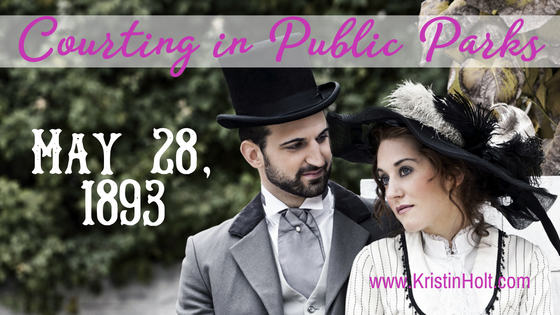
by Kristin Holt | Feb 21, 2017 | Articles
A bicycle built for two plays a role in my new release, Sophia’s Leap-Year Courtship. Such bicycles are romantic–and they’re making a resurgence. I see them in romantic bridal photography, all over Pinterest, and the research for the book showed me just when they were originally “a thing” and how they could fit into this book. Come see!

by Kristin Holt | Jan 28, 2017 | Articles
In the third and final article about Nineteenth Century Ice Cutting, I share some of the highlights of the history surrounding a Boston entrepreneur’s ice company, both domestic and foreign. Historic sources share insights and facts that make ice a pretty cool subject to study! See vintage images of ice cutters at work.

by Kristin Holt | Dec 13, 2016 | Articles
Weather can be a character in a book, just like a person or an animal. In the case of The Marshal’s Surrender, Winter is a setting and a villainous character, hiding clues, endangering lives, impacting nearly every scene as a sense of place and timing. Have you ever thought of weather in the role of character?

by Kristin Holt | Dec 10, 2016 | Articles
When did U.S. Marshals begin? What were their responsibilities? Can you believe President George Washington signed the Marshals into law for the purpose of working the National Census? Over time, their job description changed, but they’ve been the one law enforcement position with a time-limit. At the turn of the century, Marshals still didn’t have universal badges. My new release, coming December 20, 2016, is a U.S. Marshal turned small-town Sheriff. He’s learning his problems aren’t smaller or easier.
The Marshal’s Surrender
Coming December 20, 2016

by Kristin Holt | Nov 22, 2016 | Articles
In 1893, expectations surrounding courtship made it improper for a couple to show affection for one another in public. Baltimore apparently outlawed simple signs of affection in their city parks, raising the alarm in New York City where Central Park was a key location for courting couples to go about their courtship (which included simple things like sitting on a bench together, a man’s arm about his sweetheart’s waist). This article includes a newspaperman’s interview with two different Central Park policemen, one who favored strict laws prohibiting such displays of affection and one who was most tolerant. Step back in time and enjoy an entire vintage newspaper article and historic images of Central Park in the late 19th century.













